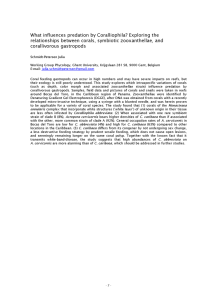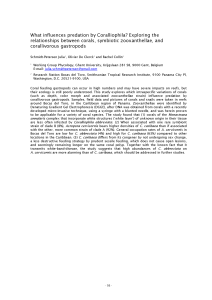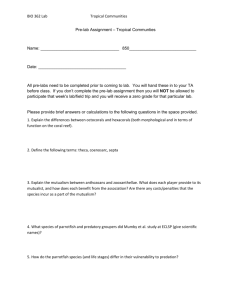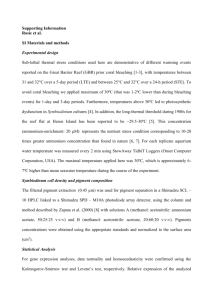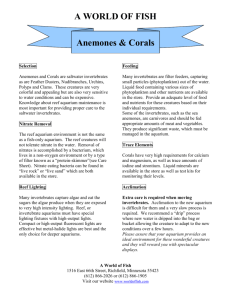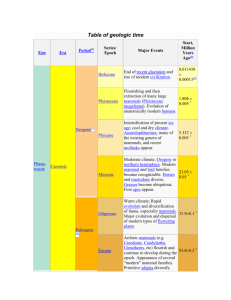Reef chart filled in
advertisement
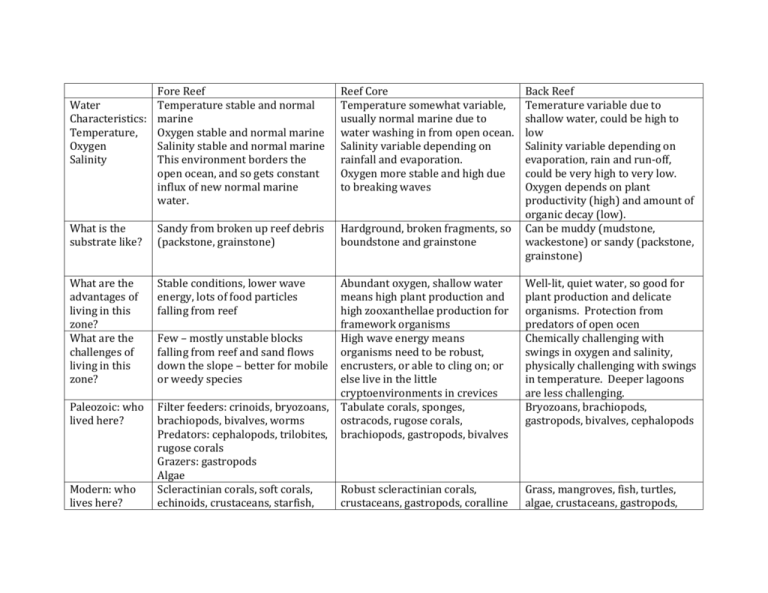
Fore Reef Water Temperature stable and normal Characteristics: marine Temperature, Oxygen stable and normal marine Oxygen Salinity stable and normal marine Salinity This environment borders the open ocean, and so gets constant influx of new normal marine water. Reef Core Temperature somewhat variable, usually normal marine due to water washing in from open ocean. Salinity variable depending on rainfall and evaporation. Oxygen more stable and high due to breaking waves What is the substrate like? Sandy from broken up reef debris (packstone, grainstone) Hardground, broken fragments, so boundstone and grainstone What are the advantages of living in this zone? What are the challenges of living in this zone? Stable conditions, lower wave energy, lots of food particles falling from reef Paleozoic: who lived here? Modern: who lives here? Abundant oxygen, shallow water means high plant production and high zooxanthellae production for framework organisms Few – mostly unstable blocks High wave energy means falling from reef and sand flows organisms need to be robust, down the slope – better for mobile encrusters, or able to cling on; or or weedy species else live in the little cryptoenvironments in crevices Filter feeders: crinoids, bryozoans, Tabulate corals, sponges, brachiopods, bivalves, worms ostracods, rugose corals, Predators: cephalopods, trilobites, brachiopods, gastropods, bivalves rugose corals Grazers: gastropods Algae Scleractinian corals, soft corals, Robust scleractinian corals, echinoids, crustaceans, starfish, crustaceans, gastropods, coralline Back Reef Temerature variable due to shallow water, could be high to low Salinity variable depending on evaporation, rain and run-off, could be very high to very low. Oxygen depends on plant productivity (high) and amount of organic decay (low). Can be muddy (mudstone, wackestone) or sandy (packstone, grainstone) Well-lit, quiet water, so good for plant production and delicate organisms. Protection from predators of open ocen Chemically challenging with swings in oxygen and salinity, physically challenging with swings in temperature. Deeper lagoons are less challenging. Bryozoans, brachiopods, gastropods, bivalves, cephalopods Grass, mangroves, fish, turtles, algae, crustaceans, gastropods, fish, worms, coralline algae, squid algae bivlaves



